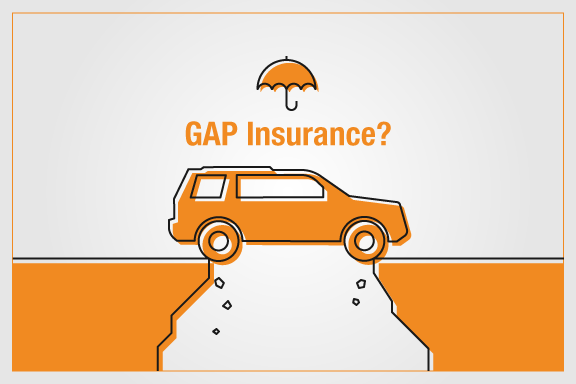What is Gap Insurance?
Gap insurance is a specific type of automobile insurance designed to protect car owners from financial loss in the event of a total loss of their vehicle, such as in cases of theft or accidents. When a vehicle is financed, the owner typically owes a certain amount to the lender, which can often exceed the current market value of the car. This discrepancy between what the owner owes and what the vehicle is worth is known as the “gap.” Gap insurance in Florida effectively covers this financial gap, ensuring that the car owner does not have to continue making payments on a vehicle that they can no longer use.
The primary purpose of gap insurance is to safeguard car owners from the burden of covering a loan balance that remains after their vehicle is considered a total loss. For example, if an individual has purchased a new car for $30,000 and, shortly thereafter, the car is totaled in an accident, the insurance company may only reimburse them for the current cash value of the vehicle, which might be $20,000. In this scenario, the owner would still owe $10,000 on the loan. Without gap insurance, they would need to pay this amount out of pocket, placing an unexpected financial strain on them.
Moreover, gap insurance is particularly beneficial for those who have made a minimal down payment or who are financing a vehicle that depreciates quickly. It serves as a crucial safety net, helping to alleviate concerns over substantial financial responsibility in circumstances beyond the car owner’s control. By purchasing gap insurance in Florida, individuals can enjoy greater peace of mind against potential losses and ensure that they remain financially secure following the loss of their vehicle.
Why Do You Need Gap Insurance in Florida?
Gap insurance is an essential consideration for vehicle owners in Florida due to unique circumstances that make it particularly beneficial. One significant factor is the state’s notably high vehicle theft rates. According to the FBI’s Uniform Crime Reporting Program, Florida consistently ranks among the states with the highest incidents of stolen vehicles. In cities like Jacksonville and Miami, where vehicle theft is prevalent, having gap insurance can provide crucial coverage in the unfortunate event of a theft, ensuring that the owner is not left financially vulnerable.
Another reason residents should consider gap insurance is the rapid depreciation of vehicle values. Cars typically lose a substantial portion of their value within the first few years of ownership, and this decline can be accelerating in Florida due to the high sales tax and fluctuating market conditions. If a vehicle is financed, the amount owed on the loan could exceed the current market value of the vehicle. In such scenarios, standard auto insurance will only cover the current market worth, leaving the driver liable for the gap between what is owed and what insurance will pay; thus, gap insurance serves as financial protection for Florida drivers.
Additionally, Florida’s no-fault insurance laws can complicate auto insurance claims. While basic insurance covers medical expenses and other damages, it does not necessarily account for depreciation or remaining loan balances in case of an accident. For such reasons, gap insurance becomes an indispensable tool for protecting against unforeseen financial burdens. It’s particularly vital for those who have recently purchased a new or relatively expensive vehicle since they are more prone to experience significant depreciation. Consequently, residing in Florida comes with specific risks that make the acquisition of gap insurance both a prudent and necessary decision for vehicle owners.
How Does Gap Insurance Work?
Gap insurance in Florida serves as an essential financial protection tool for vehicle owners, particularly in the event of a total loss. It is designed to bridge the gap between what a policyholder owes on their auto loan or lease and the actual cash value (ACV) of the vehicle at the time of the loss. This coverage becomes critical when a vehicle is declared a total loss due to theft or an accident.
When a total loss occurs, the insurance provider assesses the value of the vehicle using the ACV, which typically considers factors such as depreciation and market value. In many cases, the ACV may be significantly less than the outstanding balance on the auto loan or lease. In these situations, the gap insurance kicks in and covers the difference, protecting consumers from financial hardship.
To illustrate how gap insurance operates, let’s consider a common scenario: John purchases a new car for $30,000 and finances it. After a year, the vehicle is involved in an accident and declared a total loss. His insurance company evaluates the car and determines its ACV to be $20,000 due to depreciation. John still owes $25,000 on the loan. Here, the gap insurance Florida policy would cover the remaining $5,000, allowing John to settle his financial obligation without incurring additional debt.
The process following a total loss event typically begins with the owner filing a claim with their standard auto insurance provider, which then assesses the situation. Upon establishing the ACV, communication with the gap insurance provider is necessary. The insurance company will then process the claim to calculate the amount due and facilitate the payment directly to the lender, thus alleviating the financial burden for the vehicle owner.
Who Should Consider Gap Insurance?
Gap insurance in Florida serves as a financial safety net for specific groups of individuals whose circumstances may render traditional auto insurance insufficient in the event of a total loss. The primary category includes those who lease vehicles. Since leasing a car generally requires lower monthly payments, individuals might find themselves responsible for a gap between their lease-end value and the actual remaining balance on their contract in case of a total loss incident.
Another group to consider are those who have made a low down payment on their vehicle purchase. When financing a car with a minimal upfront payment, the loan amount often surpasses the car’s market value, especially in the early years of ownership. If the vehicle were to be totaled in an accident, the owner might end up owing more than what the insurance company will reimburse. In such situations, gap insurance in Florida becomes an essential cushion against potential financial burdens.
Additionally, individuals who own cars known for high depreciation rates can greatly benefit from gap insurance. Certain makes and models, particularly luxury or sports cars, may lose value more rapidly than others. Owners of these vehicles face a higher risk as their insurance payout could be significantly lower than the outstanding loan balance. For example, if a vehicle worth $30,000 experiences a rapid depreciation and is totaled, the owner might find themselves with a substantial financial gap. Recognizing these scenarios can help individuals determine whether gap insurance is a prudent option for their specific financial situation.
Ultimately, potential car owners in Florida should consider their financing arrangement, the depreciation rate of their vehicle, and their personal financial situation when evaluating the necessity of gap insurance. Making an informed decision in these matters can help avoid unforeseen financial challenges in the future.
How to Purchase Gap Insurance in Florida
Purchasing gap insurance in Florida involves several steps that require careful consideration to ensure that consumers select the best option suited to their needs. This type of insurance is designed to cover the financial gap between what you owe on your vehicle and its actual cash value in the event of a total loss. One of the first steps in obtaining gap insurance is determining the coverage amount based on the vehicle’s financing details and market value.
Gap insurance can be acquired through various channels, the most common of which include car dealerships, insurance companies, and credit unions. When purchasing through a car dealership, consumers should be aware that this option may carry a higher premium compared to buying directly from an insurance provider. However, dealerships often offer this insurance as part of a financing deal and may provide incentives that influence the cost.
On the other hand, insurance companies generally provide more customizable gap insurance policies. It is advisable to compare quotes from multiple insurers to find the most competitive rates, as well as evaluating the different terms and conditions associated with each policy. Many consumers overlook their credit unions as a viable option; some credit unions offer gap insurance to their members at lower rates, potentially making it a cost-effective option.
When considering the purchase, it is essential for consumers to pay attention to factors such as cost, coverage limits, and policy terms. Understanding the specific exclusions and limitations in the policy is critical, as these can significantly affect the actual coverage received in the event of a claim. By weighing these considerations and shopping around, consumers can make informed choices that best address their needs for gap insurance in Florida.
Cost of Gap Insurance in Florida
Understanding the cost of gap insurance in Florida is crucial for any vehicle owner looking to protect themselves financially in the event of a total loss. The cost of this specific type of insurance can vary based on several key factors. The first notable element is the type and value of the vehicle. Generally, newer, high-value cars may attract higher premiums as they are more likely to incur significant losses in an accident. Conversely, older or lower-value vehicles may result in a reduced cost of gap insurance.
Another important consideration is the insurance provider chosen by the policyholder. Different companies have varied pricing strategies, which means that a thorough comparison of multiple providers is beneficial. It is advisable to obtain quotes from several reputable insurers in Florida to identify competitive rates for gap insurance. Often, companies will offer discounts or bundled insurance packages, which could provide further savings for the customer.
The driving history of the policyholder also plays a significant role in determining the cost of gap insurance. Individuals with a clean driving record are likely to see lower premiums compared to those with a history of accidents or traffic violations. Insurers assess the risk level of a driver, and this assessment is reflected in the insurance cost. Maintaining a safe driving record not only contributes to more affordable gap insurance rates in Florida but can also result in more favorable terms across other types of auto insurance policies.
On average, gap insurance in Florida may range from $20 to $50 per year, depending on the aforementioned factors. It is advisable to review your options carefully and consider personal circumstances when calculating potential costs. This diligent approach ensures that you secure the best gap insurance policy suited to your specific needs while promoting financial security in the event of unforeseen circumstances.
Common Misconceptions About Gap Insurance
Gap insurance in Florida is often misunderstood, leading to a number of misconceptions that can impact a consumer’s financial decisions. One prevalent myth is that gap insurance is unnecessary for individuals who already have full coverage auto insurance. This belief stems from the idea that comprehensive and collision coverage alone is sufficient to protect a vehicle’s value. However, it is important to note that full coverage typically addresses repair costs or provides a payout for the vehicle’s market value at the time of an accident. If the vehicle is deemed a total loss, the insurer typically pays out only the current market value, which can be significantly less than the outstanding loan balance.
Another misconception is that gap insurance is standardized across all auto insurance providers. In reality, the provisions and terms of gap insurance can vary significantly depending on the provider. It is essential for consumers to read the fine print and understand the specific terms of their gap insurance policy within the context of their overall auto coverage. This understanding will ensure they have a comprehensive knowledge of what is included, such as whether it covers deductibles, or additional benefits that may apply.
Moreover, many drivers believe that gap insurance is only relevant for new vehicles or during the initial stages of a loan. While it is true that gap insurance is particularly beneficial during the first few years of a car loan when depreciation affects loan balances significantly, it can remain relevant throughout the life of the loan, especially for individuals who financed their vehicles with little to no down payment.
In conclusion, demystifying these common misconceptions about gap insurance in Florida is crucial for drivers. Understanding the distinction between gap insurance and traditional auto coverage empowers consumers to make informed financial choices, ensuring they are adequately protected in the event of a total loss.
Making a Claim on Your Gap Insurance
Filing a claim for gap insurance in Florida is a process that requires careful attention to detail to ensure a smooth experience. When an insured vehicle is totaled or stolen, the primary step is to contact your gap insurance provider as soon as possible. This prompt communication initiates the claims process and allows you to receive the necessary assistance in a timely manner.
To start with, gather all relevant documentation that may be required to substantiate your claim. This typically includes the original insurance policy, proof of vehicle ownership, police report if applicable, and any documentation related to the accident or theft. It’s also important to have information pertaining to the remaining balance on your vehicle loan or lease, as gap insurance is designed to cover the difference between your vehicle’s actual cash value and the amount owed on the loan. Maintaining clear records and receipts throughout the process can significantly aid in a smoother claim experience.
The next step involves submitting your claim, which can often be done online or via an insurance representative. Pay close attention to the instructions provided by your gap insurance Florida provider to ensure that no steps are overlooked. Following submission, the processing of your claim may take anywhere from a few days to several weeks, depending on the complexity of the situation and the provider’s policies.
To enhance the claim experience, consider staying in regular contact with your claims adjuster. Clearly communicate any questions or concerns you may have throughout the process. Additionally, inquire about the expected timeline for your specific claim, as this can help set realistic expectations. By being proactive and organized, you can create a more efficient and stress-free claim process for your gap insurance in Florida.
Conclusion: Is Gap Insurance Right for You?
In determining whether gap insurance is a prudent choice for your circumstances, several key factors must be considered. First and foremost, evaluate your current vehicle’s financial standing. If you purchased a new or relatively new car, the likelihood of depreciation affecting your outstanding loan is more pronounced. In Florida, where vehicle values can fluctuate, gap insurance may provide substantial financial protection in case of an accident or theft that results in a total loss. This coverage acts as a buffer, ensuring that you are not left paying the difference between your car loan and the payout from your insurer.
Another essential aspect to assess is your financial readiness. Consider how well you would be able to manage the costs incurred if your vehicle were deemed a total loss. If the prospect of being responsible for significant leftover loan payments after an accident is daunting, gap insurance may be worthwhile. It helps alleviate the stress associated with the potential financial burden that can arise from a depreciation gap.
Moreover, understanding your insurance policy’s terms and the benefits it offers can guide your decision-making process. Some insurance companies in Florida might include gap insurance as part of their comprehensive packages, while others may charge it separately. Reviewing your policy with an insurance agent can clarify these options and help ensure you select the coverage best suited to your needs.
Ultimately, the decision to invest in gap insurance in Florida should be based on a careful evaluation of your vehicle’s value, your financial stability, and your personal comfort with risk. By weighing these considerations, you can ascertain whether gap insurance is a strategic addition to your financial planning when it comes to protecting your vehicle investment.




